Designing A Home Office That Boosts Productivity

On some days, it takes everything you’ve got to focus on work, prioritize, and meet deadlines. But when you’re working from home, things can be even more challenging thanks to distractions and the all-too-tempting call of your couch. That’s why it’s important to design a home office that boosts productivity, instead of just cracking open your laptop at the kitchen table.
Choose the right space for your home office that’s quiet and has good natural light. Use smart storage solutions to avoid clutter and stay focused with tech-savvy features like time-management tools and noise-canceling headphones. Pay attention to ergonomics, task lighting, and colors when designing your office, and set clear schedules and routines to define a boundary between work and personal time.
Now, designing a functional workspace doesn’t mean you need an entire separate room dedicated to your home office (although that’s certainly ideal). Instead, it means being intentional with how you set up your office area (and schedule) to be the most productive during your chosen work hours.
The Benefits Of A Well-Designed Home Office
Wondering why you should devote extra time to designing your home office? For one thing, you’ll get more done and be less stressed when you do it. Your work environment shapes how you feel and approach things, so if it’s chaotic, you’ll likely feel the same way.
Let’s face it, many home offices aren’t optimized for efficiency or distraction-free work. Therefore, when it’s time to tackle projects or spreadsheets, you end up doing laundry, scrolling too long through emails, or listening to your kids argue over the TV remote.
Nowadays, more and more people are finding remote work, which makes the need for a functional home office even more important. If you’re hoping for a work-from-home or hybrid position, you could improve your chances by creating a more productive home work environment.
A well-designed home office also means you have a clear separation between personal and work life. Therefore, you won’t feel pulled too far in two different directions. You can focus on work when you’re in your office, and keep it there when the work day is over.
Designing A Home Office Optimized For Productivity
So, how do you get this optimal home office? Do you have to knock down walls (or put some up)? No, you don’t have to renovate, but you do need to put some thought into the design. Here are 8 things to consider when designing a functional home office.
Choose The Right Space
Just like they say in real estate — location matters. When you buy a house, the location is one of the number one things you think about because it’s often the hardest to change. The same goes for deciding on a space for your home office.
If you have a separate room that you aren’t using, then that could be the perfect spot. However, don’t assume it’s the only option. No matter what space you choose, it should meet a few essential criteria.
- A quiet part of the home without a lot of foot traffic
- Natural lighting
- Clear boundaries
A spare room won’t do you any favors if people have to pass through it to get to other parts of the house. Likewise, if it’s super dark, it could be depressing to work there day in and day out. You could add a sun lamp and figure out different pathways for people to take, but just use this as an example of why you want to look at all your options.
If you don’t have a spare room, find a quiet spot in the house, removed from most of the activity. If it’s in a shared space, carve out a nook or dedicated area using a room divider, curtains, or freestanding bookshelves.
Natural lighting is great for keeping up your energy levels and mood, but if it’s hard to come by, make sure you have adequate artificial lighting. Choose sheers for the windows, so you get privacy without blocking the light.
Pay Attention To Comfort: Ergonomics Are A Thing
Ergonomics isn’t just a fancy word. Choosing products designed to work well with the human body is a big factor in creating a comfortable and productive home office. Think about it. If you’re relaxed, you’re likely not to tire out as fast and won’t experience as much pain that could hinder your performance.
Ergonomics can help decrease certain problems, like musculoskeletal disorders, or make it easier to do specific tasks. For example, something like typing may not be as troublesome if you deal with arthritis or Carpal Tunnel. Although proper equipment won’t get rid of your problems, it could go a long way to helping decrease your discomfort.
Here are some examples of ergonomics in action:
- Proper monitor placement, so you don’t have to look up or down to view it
- The right keyboard and mouse designs so your hand is relaxed and comfortable when using them
- An ergonomic chair and an adjustable desk to improve posture and back support
- Certain upgrades, like footrests or wrist pads that can increase comfort
- Proper temperature control to maintain a pleasant environment
- Adequate ventilation
The Right Lighting Is Important In Your Home Office
Beyond natural light, it’s important to make sure you have the right artificial light in your home office area, too. An overhead fixture doesn’t offer enough light for things like reading, going over papers close-up, etc.
You also need proper task lighting, like a good desk lamp, so you don’t deal with eye strain. Make sure the light isn’t harsh or overly bright. Use a good shade that helps diffuse the light, so you don’t end up with a glare in your eyes.
Pick Colors That Encourage You To Be Productive
Select colors for your home office that will help you feel relaxed and calm to help alleviate any stress you might get from work. Color psychology tells us that blues and greens are good picks for a soothing, rejuvenating space.
You might think red is the way to go since red symbolizes energy, but it can be a bit overstimulating. The best way to pick the optimal colors for your office is to see how you react to certain samples. A blend of a couple of different hues may be the ideal option for you.
Keep Your Home Office Organized
Don’t allow clutter into your workspace. It just creates stress. You won’t ever want to go to work. Get smart storage solutions, like shelves, drawer organizers, wall-mounted file racks, etc., to create an organized space.
The goal is to access what you need quickly and keep your work surface tidy and ready for anything. Go paperless wherever possible, but also organize digital files so you don’t become overwhelmed every time you turn on your computer.
If wires and cords stretch across your desk like a bunch of electrical snakes, use zip ties to keep them together. Run them under and behind your desk as much as possible. Use cord covers to help hide unsightly wires.
Tap Into Technology To Help You Focus And Stay Productive
One tricky thing about a home office is staying focused on work. Even if you live alone, this can be challenging, but it’s especially tough when others are living in your office. Try noise-canceling headphones to help dampen sounds that are out of your control.
Play a white noise machine (or ask Alexa to) if you find the sound soothing. It can mask ambient noise that you may find distracting. Use filters on your computer that silence notifications or deny you access to social media and other apps during certain hours.
Make sure you have high-speed internet and hardware that are reliable, so you don’t have to deal with frequent interruptions or crashes. Utilize a surge protector to avoid an unfortunate accident, like lightning frying your hard drive.
Add A Few Personal Touches For Motivation
Don’t forget to make your home office feel a little personal. If you didn’t work from home, you’d likely still add a few things to your desk or work area, like a picture of your family or your favorite squishy stress hippo.
Do the same with your home office. You could place a fresh plant on your desk, a meaningful memento from your best friend, and a vision board or some of your favorite quotes. The key is to keep the items to a handful, so that they don’t turn into clutter and become distracting.
It’s Not Just About The Physical Design When Creating A Functional Home Office
The routines you put in place when you design your home office are just as important as the physical space. You want to keep work separate from your personal life as much as possible when you work from home.
Have a clear start and end time for work, and use designated signals to define when you’re at work and at home. It could be a certain outfit, maybe you play a particular song when you’re done for the day, or it could be the light you use when you’re “at work.”
Establish an exit ritual for when you’re ready to “go home.” Likewise, you could have a ritual that starts off your work day. Perhaps you pack up your tablet and computer in one room and bring it to your office area each day, then pack it up and return it to another location when you’re finished.
If you live with others, share your schedule with them and the expectations for when you’re at work. This step is crucial if your home office must be in a shared area of the home. Make sure everyone is on the same page and make arrangements for any out-of-the-ordinary situations, like sick kids staying home from school.
A Home Office That Makes You Feel Like A Boss
Maybe you’re your own boss already, but if not, a productive home office can certainly make you feel like one. You can whip up spreadsheets, close deals, create the ultimate graphics, or anything else your job requires.
You don’t have to renovate. Small changes can make big improvements, as long as they’re the right ones. So use these tips to create a home office that works for you, so you can work to your full potential.
Related Guides:

Stacy Randall is a wife, mother, and freelance writer from NOLA that has always had a love for DIY projects, home organization, and making spaces beautiful. Together with her husband, she has been spending the last several years lovingly renovating her grandparent's former home, making it their own and learning a lot about life along the way.
More by Stacy Randall










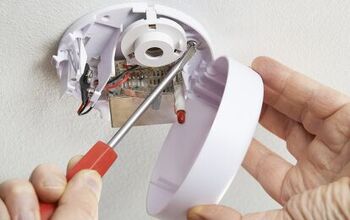
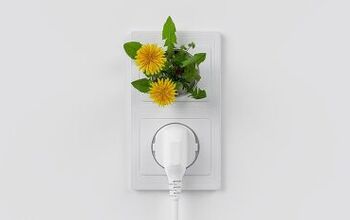
![The 10 Best Table Saws - [2022 Reviews & Buyer's Guide]](https://cdn-fastly.upgradedhome.com/media/2023/07/31/9070645/the-10-best-table-saws-2022-reviews-buyer-s-guide.jpg?size=350x220)



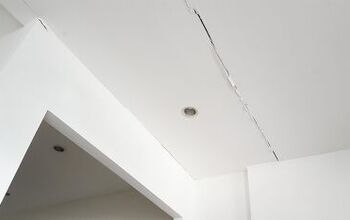





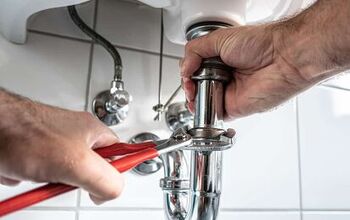

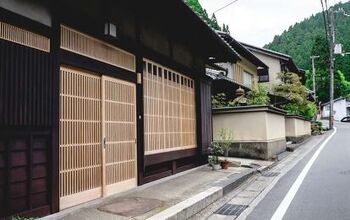


![Cost To Drill A Well [Pricing Per Foot & Cost By State]](https://cdn-fastly.upgradedhome.com/media/2023/07/31/9074980/cost-to-drill-a-well-pricing-per-foot-cost-by-state.jpg?size=350x220)